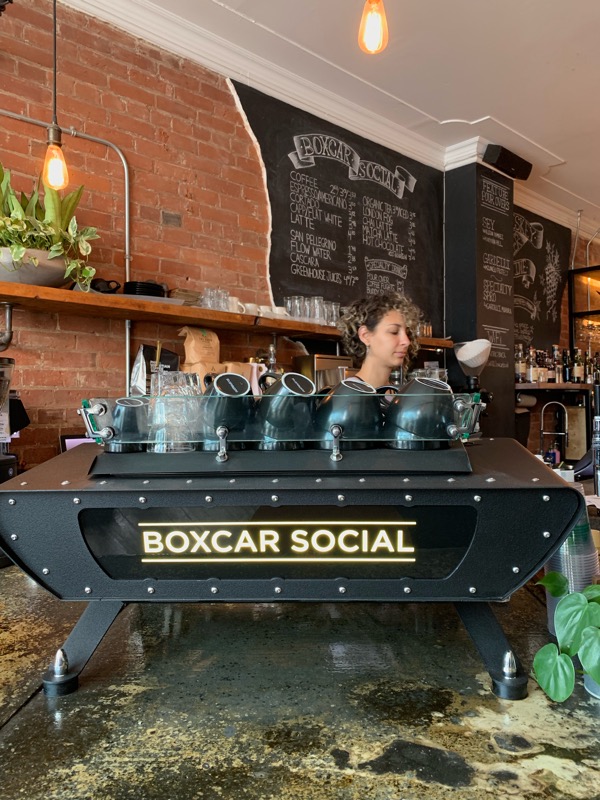These local food-related gifts will surely bring joy to food lovers this holiday season
By: Madeline Liao
(Dzenina Lukac/Pexels)
With the holidays fast approaching, many of us are scrambling to find the perfect gift for our loved ones. Gift shopping can be difficult, especially if you don’t know what to buy and where to look. Luckily, there are plenty of small businesses right here in Canada that can help you check things off your shopping list. Here are some potential gift ideas from Canadian businesses that may be just the thing that the foodie in your life is looking for.
1. Fruit syrups from Summerland Sweets
Based in Summerland, B.C., Summerland Sweets carries a variety of fruit jams and syrups sourced fresh from the Okanagan Valley. Other products also include fruit jellies and nut brittles, which all make for sweet treats. The company is family-owned and the products are made right in their production facility in Summerland. Their assorted gift packages would make for an excellent present and can pair nicely with some Christmas morning pancakes. If you’re in the Summerland area, pay a visit to their facility to see their process (and enjoy some ice cream while you’re at it).
2. Mini six-pack pepper sauces from Spice of Life
Spice of Life is a small, Toronto-based business that carries handmade hot sauces and preservatives. Their products use natural, locally sourced ingredients and are free of artificial flavourings. With a large selection of flavours, Spice of Life sauces could be a fitting gift choice for someone who likes every meal with a little bit of spice. If you’re not sure which flavour to go with, the six-pack of pepper sauces can serve as a trial for the recipient to find their favourite.
3. Loose-leaf teas from Cup of Té
Cup of Té is a Black-owned online tea retailer based in Toronto. Founded by former gymnast Taylor Lindsay-Noel, the company “take[s] pride in the quality and unique blends of [their] products while ensuring that each tea is hand selected, organic and ethically sourced.” When you shop from Cup of Té, a portion of proceeds goes to mental health awareness causes. Check out their gift ideas page for products like the iron cast teapot set or matcha whisk bundle that could make a tea lover happy in the cold weather.
4. Barrel-aged whiskey maple syrup from Wabanaki Maple
One thing this Canadian gift guide definitely needs is barrel-aged maple syrup from Wabanaki Maple, an Indigenous and women-owned company located in Neqotkuk (Tobique First Nation), N.B. They work to preserve the environment and Indigenous communities, and invite customers to “discover a piece of history and a taste of culture in every bottle.” Their whiskey maple syrup is a twist on traditional maple syrup culture from the Indigenous Peoples of the First Nations and is perfect for the winter. Each bottle is made using techniques that have been preserved through generations.
5. An Indigenous cuisine cookbook by Shane M. Chartrand with Jennifer Cockrall-King
This cookbook, tawâw - Progressive Indigenous Cuisine, is a great gift idea for the foodies who are also (aspiring) cooks. The book follows Chartrand’s culinary journey from childhood to adulthood — from learning to hunt and raising livestock to working as a professional chef, making this work transcend the scope of just a cookbook. It shares the meaning of cooking, eating and sharing food in Indigenous homes and communities.
6. Astrological sign resin coasters from Hando Meido Studio
These custom star sign coasters can be a fitting gift for the astrology-obsessed friend on your list. Each coaster is handmade and can be personalized with the recipient’s name, so every time they drink their morning coffee or tea, they can save their table from stains in style. The Etsy shop, HandoMeidoStudio, ships from Toronto and offers free delivery in Canada. Check out their page for more handmade coasters and other crafty products.
7. Cookie gift box from Craig’s Cookies
With over 40,000 followers on Instagram, Craig’s Cookies is a popular Toronto destination for those with a sweet tooth, and cookies are certainly a practical gift idea for a foodie. There are over 100 cookie flavours to choose from at Craig’s, which can be overwhelming for even the biggest of cookie lovers. Luckily, the store offers gift boxes that are neatly wrapped up for any gift exchange. Those in the Greater Toronto Area can also pick up their order at a store location to avoid shipping delays — Craig’s Cookies can be found in The Village, Parkdale, Leaside, Leslieville and at Yorkdale Mall.
8. Chocolate bundle from Chachalate
A gift guide simply cannot be complete without chocolate. Chachalate is an Asian-owned chocolate company in Toronto that produces vegan chocolate. Their products come from ethically sourced cocoa beans and are all made from scratch, producing a “naturally fruity” flavour. Chachalate’s chocolate bars contain only two to five ingredients, making them a healthier alternative to mass-produced chocolates. The “build your own bundle” option is a great choice for a gift, especially if you’re finding it hard to choose from all their flavours.



















































